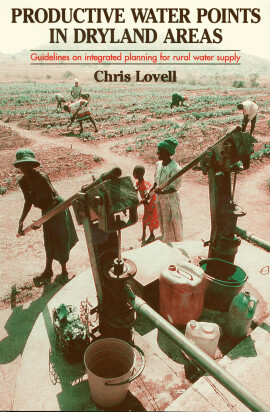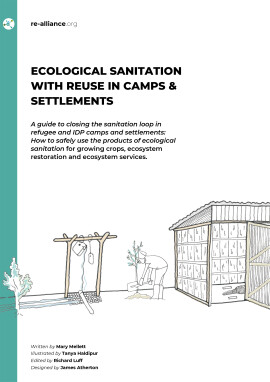
Productive Water Points in Dryland Areas
Guidelines on integrated planning for rural water supply
Lack of water is the limiting factor for many household and community-based activities for millions of people living in dryland areas. Rural water supply programmes tend to focus only on improved access to domestic supply and improved sanitation. Less attention has been paid to how communities prefer to use water to develop their own livelihoods. This is due partly to the difficulties of abstracting sufficient reliable groundwater in dryland areas, and partly due to a misunderstanding of why wells and boreholes fail, which leads to a general belief that abstraction should be limited to domestic supply to conserve the resource. When more water is available, not only are basic drinking and washing needs satisfied, but also other activities with a high economic value become feasible. This book shows how research in Southern Africa has shed light on why conventional wells and boreholes fail, on the potential of the groundwater resource to support production through improved siting and selection of more appropriate well designs, and on the positive impacts and some problems that can emerge at productive water points. The findings are presented in a practical manner to encourage planners and practitioners in rural water supply to consider developing productive water points in drought-prone areas.
Published: 2001
Pages: 240
eBook: 9781780441306
Paperback: 9781853395161
| Preface | |||
|---|---|---|---|
| Acknowledgements | |||
| 1 Productive water points in dryland areas | |||
| 2 Understanding why wells and boreholes fail | |||
| 3 How much does a productive water point cost? | |||
| 4 Making more effective use of existing water points | |||
| 5 Developing new water points of appropriate design | |||
| 6 In partnership with the community | |||
| 7 Management of productive water points | |||
| 8 Anticipating the future of rural water supply | |||
| References and further reading | |||
| Appendices | |||
| 1: Cost/benefit analysis of 13 productive water point options | |||
| 2: Pumping test examples | |||
| 3: Social contracts and constitutions | |||
| 4: Groundwater development and the concept of safe yield | |||
| .Glossary of technical terms | |||
| Index |
Chris Lovell
Chris Lovell works for the UK Centre for Ecology and Hydrology in Oxford. He is currently based in Zimbabwe and is involved in rural development projects in ground water development, small-scale irrigation and intergrated natural resouce management.
Comparative hydrological behaviour of two small catchments in semi-arid Zimbabwe
Mugabe, F.T.
Hodnett, M.
Senzanje, A.
Journal of Arid Environments, Vol. 69 (2007), Iss. 4 P.599
https://doi.org/10.1016/j.jaridenv.2006.11.016 [Citations: 17]Cassava production as a climate change adaptation strategy in Chilonga Ward, Chiredzi District, Zimbabwe
Mupakati, Tambudzai
Tanyanyiwa, Vincent I.
Jàmbá: Journal of Disaster Risk Studies, Vol. 9 (2017), Iss. 1
https://doi.org/10.4102/jamba.v9i1.348 [Citations: 24]Ground Water Security and Drought in Africa: Linking Availability, Access, and Demand
Calow, Roger C.
MacDonald, Alan M.
Nicol, Alan L.
Robins, Nick S.
Groundwater, Vol. 48 (2010), Iss. 2 P.246
https://doi.org/10.1111/j.1745-6584.2009.00558.x [Citations: 197]International Development Governance
Managing Developmentin Africa
Conyers, Diana
2005
https://doi.org/10.1201/b15747.ch34 [Citations: 0]Opportunities for increasing productive water use from dam water: a case study from semi-arid Zimbabwe
Mugabe, F.T.
Hodnett, M.G.
Senzanje, A.
Agricultural Water Management, Vol. 62 (2003), Iss. 2 P.149
https://doi.org/10.1016/S0378-3774(03)00077-5 [Citations: 46]




